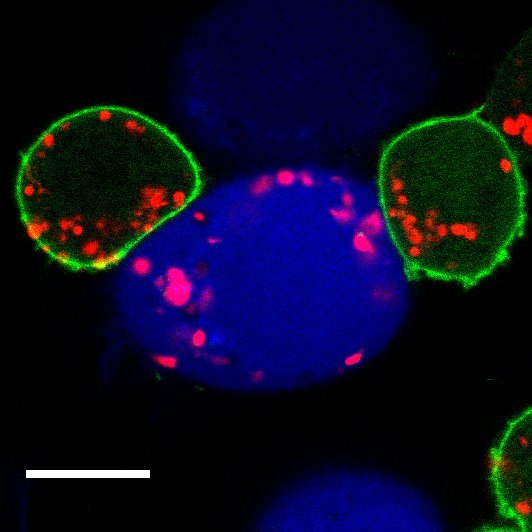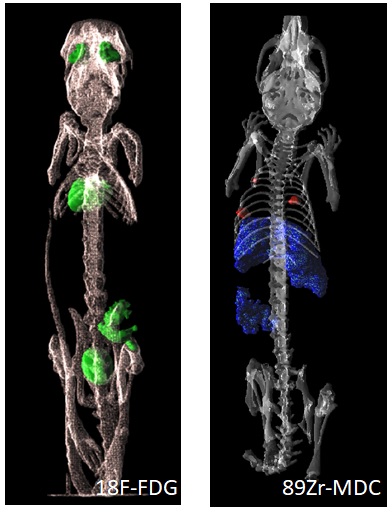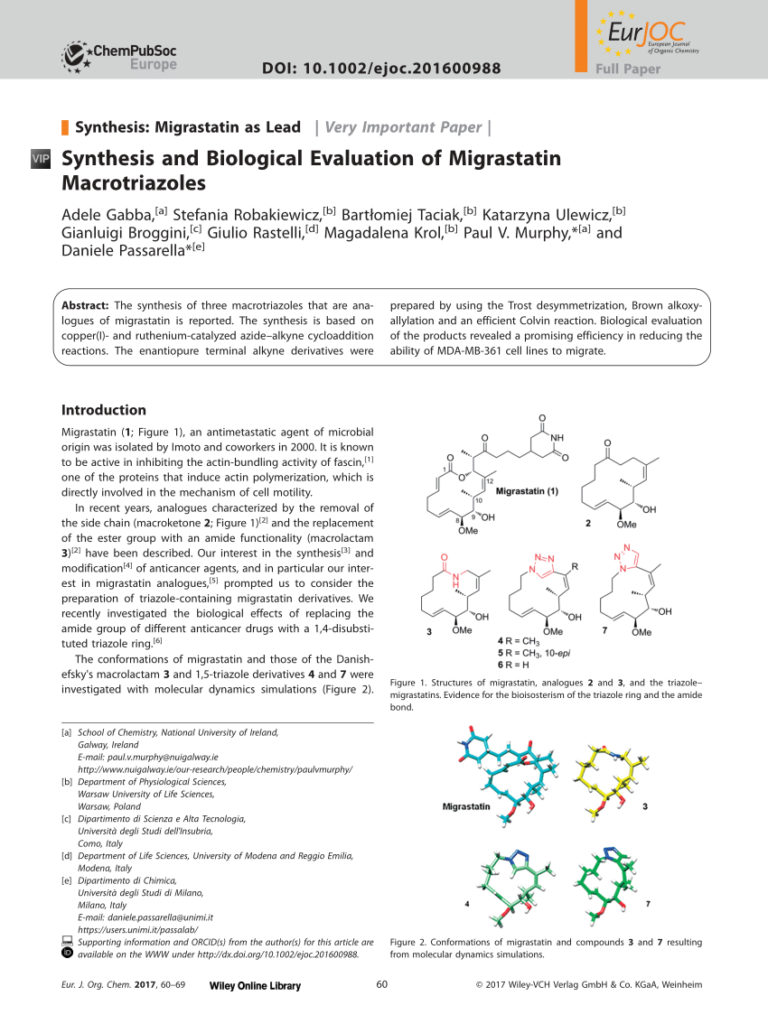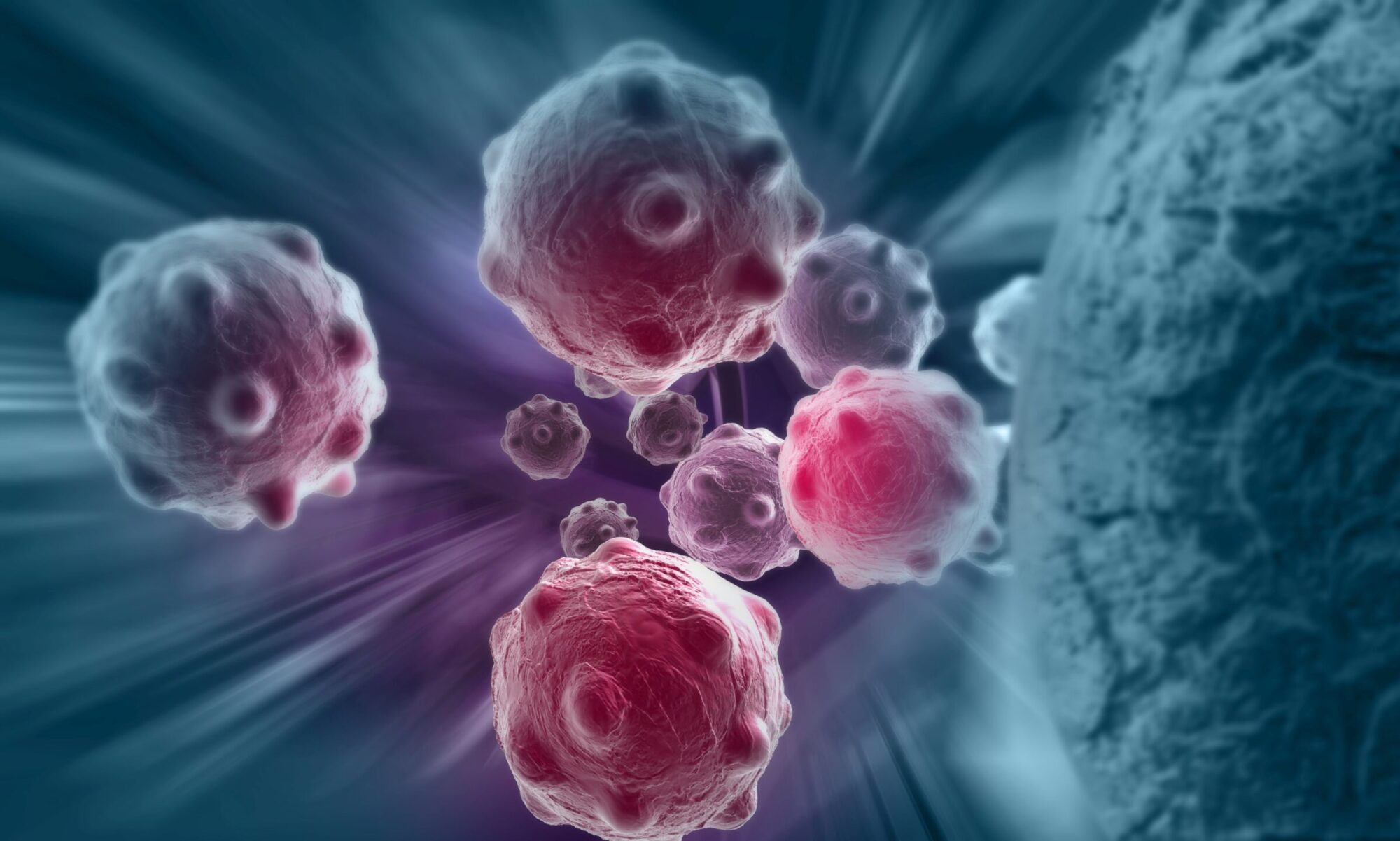MACOV project: TRAIN-based cancer therapies against ovarian cancer
In 2022, Prof. Król received the MACOV project for development of the Macrophage-based immunotherapy of platinum-resistant ovarian cancer from the European Innovation Council (EIC Transition grant). The project will end in 2025 and after successful completion of the project the company will start Phase 1b Clinical Trial of macrophage therapy in platinum-resistant ovarian cancer patients.
The ovarian cancer expertise, networking and collaboration has been acquired by the Team members during participation to the European Cooperation in Science and Technology (COST) Action Mye-EUNITER (BM1404) and runing the european study resulted in establishing new study protocols for patients with cancer, infection and inflammation:
-
- Cassetta L, Bruderek K, Skrzeczynska-Moncznik J, Osiecka O, Hu X, Rundgren IM, Lin A, Santegoets K, Horzum U, Godinho-Santos A, Zelinskyy G, Garcia-Tellez T, Bjelica S, Taciak B, Olsnes Kittang A, Höing B, Lang S, Dixon M, Müller V, Utikal JS, Karakoç D, Yilmaz KB, Górka E, Bodnar L, Evdoxia Anastasiou O, Bourgeois C, Badura R, Kapinska-Mrowiecka M, Gotic M, ter Laan M, Kers-Rebel E, Król M, Santibañez JF, Müller-Trutwin M, Dittmer U, Espada de Sousa A, Esendağlı G, Adema G, Loré K, Ersvær E, Umansky V, Pollard JW, Cichy J, Brandau S, Differential expansion of circulating human MDSC subsets in patients with cancer, infection and inflammation, Journal of Immunotherapy of Cancer, 2020 ;8:e001223. doi:10.1136/jitc-2020-001223, IF = 12.469
Commercialization of cancer therapies based on TRAIN mechanism
For the commercial development of the technology, to translate the basic research into real therapy, a spin-off company has been founded. So far eight international patent applications have been files, five international patents have been published and four of them have been granted in several jurisdictions (including major markets: US, EU, Japan, China, Australia, Southern America):
-
- Król M, Benni I, Baiocco P, Rygiel T, Boffi A. Cellular targeted active ingredient delivery system, PCT/EP2016/064484, publication number: WO/2016/207257 – granted International Patent
- Król M, Benni I, Baiocco P, Rygiel T, Boffi A. Cellular targeted label delivery system, PCT/EP2016/064483, publication number: WO/2016/207256 – granted International Patent
- Król M, Benni I, Baiocco P, Rygiel T, Boffi A, Szulc A, Plich Z, Tonecka K, Ulewicz K, Taciak B, Kiraga Ł. Cellular targeted pharmaceutically active substance or label delivery system, PCT/PL2016/050057, publication number: WO/2017/222398 – granted International Patent
- Arcovito A, Bonamore A, Boffi A, Marszalek I, Skorzynski M, Rygiel T, Król M. Ferritin variants with increased stability, complexation ability and transferrin receptor affinity, PCT/EP2021/056996, publication number WO/2021/185986 – granted International Patent
- Arcovito A, Bonamore A, Boffi A, Marszalek I, Skorzynski M, Rygiel T, Król M. Ferritin variants with increased stability and complexation ability, PCT/EP2022/057205, publication number WO/2022/195092
In 2020, Prof. Król was awarded the ERC Proof of Concept (PoC) grant “TROJAN” for further development of the project – obtaining PoC in vivo using human macrophages and “humanized” cancer models.
The developed cell-based therapy will enter the clinic in Q2 2024: the First in Human Clinical Trial (Phase 1b) of allogeneic off-the-shelf macrophage therapy in glioblastoma patients.
Early pre-clinical results of glioblastoma project have been made recently public:
-
- Sun M, Białasek M, Rygiel T, Król M, Weller M, Weiss T. A macrophage-based drug delivery platform for glioma treatment, Neuro-Oncology, 2022, 24, doi.org/10.1093/neuonc/noac174.067, IF = 13.029
Develompent of TRAIN mechanism use cases
In 2016, Prof. Magdalena Król received the European Research Council (ERC) “Starting Grant” to study the molecular mechanism of TRAIN. In 2018, this project was highlighted as one of 10 European projects to be promoted during ERC 10th Anniversary. In 2020 Prof. Król has received subsequent ERC PoC project and in 2022 the resulting EIC Transition grant.
So far, several scientific communications related to the project have been published (list below). Due to active patent policy the public scientific outreach was delayed.
-
- Kiraga Ł, Kucharzewska P, Paisey S, Cheda Ł, Domańska A, Rogulski Z, Rygiel TP, Boffi A, Król M. Nuclear imaging for immune cell tracking in vivo – Comparison of various cell labeling methods and their application, Coordination Chemistry Reviews, 2021, 445, 214008, IF = 22.06
- Kiraga Ł, Cerutti G, Braniewska A, Strzemecki D, Sas Z, Boffi A, Savino C, Montemiglio LC, Turnham D, Seaton G, Bonamore A, Clarkson R, Dabkowski AM, Paisey SJ, Taciak B, Kucharzewska P, Rygiel TP, Król M, Biodistribution PET/CT Study of Hemoglobin-DFO-89Zr Complex in Healthy and Lung Tumor-Bearing Mice, International Journal of Molecular Science, 2020, 21, 4991; doi:10.3390/ijms21144991, IF = 6.01
- Taciak B, Białasek M, Kucharzewska P, Kiraga Ł, Szulc A, Górka E, Kubiak M, Pilch Z, Tonecka K, Sas Z, Braniewska A, Cheda Ł, Rogulski Z, Godlewski M, Boggi A, Rygiel T, Król M. The macrophage-drug conjugate (MDC) as a ‘Trojan horse’ approach in cancer therapy, Cancer Immunol Research, 2020, 8, doi.org.10.1158/2326-6074, IF = 12.02
One more publication is currently in review and two others in preparation.
Discovery of TRAIN (TRAnsfer of Iron-binding proteiN)
In 2015, our team discovered that innate immune cells – macrophages – can be efficiently “loaded” with ferritin, a protein with a cage structure into which various chemical molecules can be “packed”. These “loaded” macrophages travel to the solid tumor, extravasate, reach avascular and hypoxic tumor sites, and deliver the drug-ferritin complex directly to the tumor cells. We call this mechanism TRAIN (TRAnsfer of Iron-binding proteiN).
The mechanism, previously unknown, was studied within the ERC Starting Grant entitled “Entrapment of Hypoxic Cancer by Macrophages Loaded with HAP”. This discovery is very important for the scientific society working on iron metabolism and homeostasis and for those working on immune-oncology and interactions occurring within tumor microenvironment.
TRAIN discovery shows that an unknown way of communication between macrophages and cancer cells exist. However, it gives possibility to “smuggle” anticancer drugs directly to cancer cell. Considering ability of drug encapsulation inside ferritin cavity, macrophage physiological abilities to migrate to the tumor mass, especially its avascular regions, and further transfer (TRAIN) inside tumor mass, this method allows us to create a “Trojan horse” that we may use to deliver drug directly to the tumor site. This discovery may be exploited in practice.


These main findings will be published soon as patent applications have already been filed.
So far some additional papers related to this technology have been published:
-
- Kiraga L , Cerutti G, Braniewska A, Strzemecki D, Sas Z, Boffi A, Savino E, Montemiglio LC, Turnham D, Seaton G, Bonamore A, Clarkson R, Dabkowski A, Paisey S, Rygiel T, Krol M. Pharmacokinetics of human hemoglobin-DFO 89Zr complex in mice determined by PET, Nature Scientific Reports (in revision)
- Calisti L, Trabuco MC, Boffi A., Testi C, Montemiglio L.C, des Georges A, Benni I, Ilari A, Taciak B, Białasek M, Rygiel T, Król M, Baiocco P, Bonamore A (2018) Engineered ferritin for lanthanide binding. PLoS ONE 13(8): e0201859
- Taciak B, Białasek M, Braniewska A, Sas Z, Sawicka P, Kiraga Ł, Rygiel T, Król M (2018) Evaluation of phenotypic and functional stability of RAW 264.7 cell line through serial passages. PLoS ONE 13(6): e0198943
- Kiraga Ł, Cheda Ł, Taciak B, Różańska K, Tonecka K, Szulc A, Kilian K, Górka E, Rogulski Z, Rygiel TP, Król M. Changes in hypoxia level of CT26 tumors during various stages of development and comparing different methods of hypoxia determination. PLoS One. 2018 Nov 9;13(11):e0206706
microRNAs may act as oncogenes or tumour suppressor genes, which make these small molecules potential diagnostic/prognostic factors and targets for anticancer therapies
The expression profiles of 317 microRNAs in 146 canine mammary tumours of different histological type, grade and clinical history (presence/absence of metastases) and in 25 control group samples were identified. The results show that the most significant difference in microRNA expression is between the metastatic and the non-metastatic group, which indicates a more important role of microRNAs in the metastasis process than in the malignant transformation. Moreover, the differentially expressed microRNAs constitute metastasis markers which could be used in cancer diagnosis in the future for example in tumor biopsies or in tissue sections remover during the mastectomy. Unfortunately, exploiting of microRNA as a blood-borne diagnostic tool for cancer failed. We have investigated presence of a number of the most important microRNAs identified in the tissues and in the blood of tumor-bearing dogs. Our study showed that their levels did not correlate with presence of the mammary cancer.

These results have been published in:
-
- Bulkowska M, Rybicka A, Senses KM, Ulewicz K, Witt K, Szymańska J, Taciak B, Klopfleisch R, Hellmen E, Dolka I, Gure AO, Mucha J, Mikow M, Giziński S, Król M (2017) MicroRNA expression patterns in canine mammary cancer show significant differences between metastatic and non-metastatic tumours. BMC Cancer 17:728, DOI 10.1186/s12885-017-3751-1
Identification of interactions between canine mammary cancer cells and tumor microenvironment
The research allowed understanding of complex interactions between cancer cells, and macrophages, tumor-associated fibroblasts and other cells. We showed that tumor-associated macrophages directly or indirectly change location of Wnt receptors on the cancer cell surface, changing cancer cell shape by F-actin reorganization. However, this does not occur only due to their direct contact. Macrophages secrete in a constitutive manner non-canonical Wnt activators (and at the same time canonical-Wnt inhibitors) in exosomes in order to increase cell migration in a wound healing process. An important finding is that the use of the Wnt pathway inhibitors for cancer treatment or as a supplementary drugs may lead to serious ‘side effects’. The anticancer drugs e.g. natural products that are often used as diet supplements (e.g. quercetin that is a blocker of one of the Wnt traits) may somehow stop tumor grow and proliferation of cancer cells, however they increase their ability to migrate and to form metastases. However, this effect may be inhibited by the use of synthetic analogues of migrastatins. Migrastatin is a natural compound from Streptomyces platensis that influences F-actin and inhibits cytoskeleton rearrangement. This cytoskeleton rearrangement is caused by the Wnt trait identified by our group, as the one being activated by macrophages.
We have received many awards for all these achievements, as well as our articles have been selected as cover articles or highlighted by the editor as “VIP – very important paper”.


Published papers:
-
- Lo Re D, Zhou Y, Mucha J, Jones LF, Leahy L, Santocanale C, Krol M, Murphy PV (2015) Synthesis of migrastatin analogues as inhibitors of tumour cell migration: exploring structural change in and on the macrocyclic ring, Chemistry – A European Journal, doi. 10.1002/chem.201504167 Cover Article
- Gabba A, Robakiewicz S, Taciak B, Ulewicz K, Broggini G, Rastelli G, Król M, Murphy PV, Passarella D (2016) Synthesis and biological evaluation of migrastatin macrotriazoles. European Journal of Organic Chemistry 60-69, DOI. 10.1002/ejoc.201600988
- Pingwara R, Witt-Jurkowska K, Ulewicz K, Mucha J, Tonecka K, Pilch Z, Taciak B, Zabielska-Koczywąs K, Mori M, Berardozzi S, Botta B, Rygiel T, Król M (2017) Interferon-λ promotes mammary tumor metastasis via angiogenesis extension and stimulation of cancer cell migration. Journal of Physiology and Pharmacology 68(4): 573-583
- Zabielska-Koczywąs K, Dolka I, Król M, Żbikowski A, Lewandowski W, Mieczkowski J, Wójcik M, Lechowski R (2017) Doxorubicin conjugated to glutathione stabilized gold nanoparticles (Au-GSH-Dox) as an effective therapeutic agent for feline injection-site sarcomas – chick embryo chorioallantoic membrane study. Molecules 22: 253, DOI. 10.3390/molecules22020253
- Rybicka A, Eyileten C, Taciak B, Mucha J, Majchrzak K, Hellmen E, Król M (2016) Tumour-associated macrophages influence canine mammary cancer stem-like cells enhancing their pro-angiogenic properties, Journal of Physiology and Pharmacology, 67 (5): 491-500
- Mucha J, Homa A, Dolka I, Szymańska J, Manuali E, Parzeniecka-Jaworska M, Kluciński W, Król M (2016) Immunosuppression in dogs during mammary cancer development, Veterinary Pathology, DOI. 10.1177/0300985816634808
- Khan MI, Czarnecka A, Lewicki S, Helbrecht I, Brodaczewska K, Koch I, Zdanowski R, Król M, Szczylik C (2016) Comparative gene expression profiling of primary and metastatic renal cell carcinoma stem cell-like cancer cells, PLoS ONE, 11(11): e0165718, DOI. 10.1371/journal.pone/0165718
- Dolka I, Król M, Sapierzyński R (2016) Evaluation of apoptosis – associated proteins (Bcl-2, Bax, cleaved caspase 3 and p53) expression in canine mammary tumors: an immunohistochemical and prognostic study, Research of Veterinary Sciences 105: 124-33
- Wojcik M, Lewandowski W, Krol M, Pawlowski K, Mieczkowski K, Lechowski R, Zabielska K (2015): Enhancing anti-tumor efficacy of doxorubicin by non-covalent conjugation to gold nanoparticles – in vitro studies on feline fibrosarcoma cell lines, PLoS ONE 10(4): e0124955.
- Rybicka A, Mucha J, Majchrzak K, Taciak B, Hellmen E, Motyl T, Król M (2015) Analysis of miRNA expression in canine mammary cancer stem-like cells shows epigenetic regulation of TGF-Beta signalling, Journal of Physiology and Pharmacology, 66 (1): 29-37
- Mucha J, Majchrzak K, Taciak B, Hellmen E, Król M (2015) MDSCs Mediate Angiogenesis and Predispose Canine Mammary Tumor Cells for Metastasis via IL-28/IL-28RA (IFN-λ) Signaling, PLoS ONE 10.1371/journal.pone.0103249.
- Winiarska M, Bojarczuk K, Pyrzyńska B, Bil J, Siernicka M, Dwojak M, Bobrowicz M, Miazek N, Zapała P, Zgożdżon A, Król M, Syta A, Podszywałow-Bartnicka P, Dąbrowska-Iwanicka A, Juszczyński P, Efemov D, Słabicki M, Zenz T, Le Roy A, Oliver D, Gołąb J (2014) Inhibitors of SRC kinases impair antitumor activity of anti-CD20 mAbs. mAbs 6:5, 1-13
- Juchno D, Jabłonka O, Boroń A, Kujawa R, Leska A, Grabowska A, Nynca A, Świgońka S, Król M, Spóz A, Laskowska A, Lao M (2014) Ploidy-dependent survival of progeny arising from crosses between natural allo-triploid Cobitis females and diploid C. taenia males (Pisces Cobitidae), Genetica, DOI. 10.1007/s10709-014-9779-0
- Rybicka A, Król M (2016) Identification and characterization of cancer stem cells in canine mammary tumors. Acta Veterinaria Scandinavica 58:86. DOI. 10.1186/s13028-016-0268-6
- Yuan LQ, de Jesus Perez V, Liao XB, Król M, Yeh CH (2017) MicroRNA and cardiovascular disease 2016. BioMed Research International 3780513. DOI. 10.1155/2017/3780513
- Mucha J, Motyl T, Król M (2016) Influence of lymphocytes T and myeloid-derived suppressor cells on inhibition of antitumor response. Medycyna Weterynaryjna 72(12): 735-739.
- Eyileten C, Majchrzak K, Pilch Z, Tonecka K, Mucha J, Taciak B, Ulewicz K, Witt K, Boffi A, Król M, Rygiel T (2016) Immune cells in cancer therapy and drug discovery, Mediators of Inflammation, doi.org/10.1155/2016/5230219
- Khan MI, Sobocińska AA, Czarnecka AM, Król M, Botta B, Szczylik C (2015) The therapeutic aspects of the endocannabinoid system (ECS) for cancer and their development: from nature to laboratory, Curr Pharm Des. 22: 1756-1766
- Liao XB, Jesus Perez VA, Krol M, Yeh CH, Yuan LQ (2015) Micro RNA and cardiovascular disease, BioMed Research International, ID: 734380 Editorial Article
- Król M, Motyl T (2015) Exploiting cancer genomics in pet animals to gain advantage for personalized medicine decisions, Journal of Applied Genetics 55: 337-341 Invited Article
- Król M, Pawłowski KM, Majchrzak K, Mucha J, Motyl T (2014) Canine mammary carcinoma cell lines are resistant for chemosensitizers: Verapamil and Cyclosporin A. Polish Journal of Veterinary Sciences 17 (1), 9-17
- Król M, Majchrzak K, Mucha J, Homa A, Bulkowska M, Jakubowska A, Karwicka M, Pawłowski K, Motyl T (2013) CSF-1R as an inhibitor of apoptosis and promoter of proliferation, migration and invasion of canine mammary cancer cells, BMC Veterinary Research 9:65 Highly Accessed
- Dolka I, Sapierzyński R, Król M (2013) Retrospective study and immunohistochemical analysis of canine mammary sarcomas, BMC Veterinary Research, 9: 248
- Majchrzak K, Lo Re D, Gajewska M, Bulkowska M, Homa A, Pawłowski KM, Motyl T, Murphy PV, Król M (2013) Migrastatin analogues inhibit canine mammary cancer cell migration and invasion, PLoS ONE 8(10):e76789
- Pawłowski KM, Mucha J, Majchrzak K, Motyl T, Król M (2013) Expression and role of PGP, BCRP, MRP1 and MRP3 in multidrug resistance of canine mammary cancer cells, BMC Veterinary Research 9:119 Highly Accessed
- Pawłowski KM, Maciejewski H, Dolka I, Mol JA, Motyl T, Król M (2013) Gene expression profiles in canine mammary carcinoma of various grades of malignancy. BMC Veterinary Research 9:78
- Pawłowski KM, Homa A, Bulkowska M, Majchrzak K, Motyl T, Król M (2013) Expression of inflammation-mediatted cluster of genes as a new marker of canine mammary malignancy. Veterinary Research Communications 37:123-131
- Majchrzak K, Pawłowski KM, Orzechowska EJ, Dolka I, Mucha J, Motyl T, Król M (2012) A role of ghrelin in canine mammary cancer cells proliferation, apoptosis and migration, BMC Veterinary Research, 8: 170 Highly Accessed
- Zabielska K, Lechowski R, Król M, Pawłowski KM, Motyl T, Dolka I, Żbikowski A (2012) Derivation of feline vaccine-associated fibrosarcoma cell line and it`s growth on chick embryo chorioallantoic membrane – a new model of veterinary oncological studies in vivo; Veterinary Research Communications, 36(4):227-33
- Manuali E, Giuseppe De A, Feliziani F, Forti K, Casciari C, Marchesi MC, Pacifico E, Pawłowski KM, Majchrzak K, Król M (2012) CA15-3 cell lines and tissue expression in canine mammary cancer and the correlation between serum levels and tumour histological grade, BMC Veterinary Research, 8:86 Highly Accessed
- Pawłowski KM, Popielarz D, Szyszko K, Gajewska M, Motyl T, Król M (2012) Growth Hormone Receptor RNA interference decreases proliferation and enhances apoptosis in canine mammary carcinoma cell line CMT-U27, Veterinary and Comparative Oncology, 10(1):2-15
- Król M, Pawłowski KM, Szyszko K, Maciejewski H, Manuali E, Dolka I, Jank M, Motyl T (2012) Gene expression profiles of canine mammary cancer cells grown with carcinoma-associated fibroblasts (CAFs) as a co-culture in vitro, BMC Veterinary Research, 8:35 Highly Accessed
- Król M, Pawłowski KM, Majchrzak K, Gajewska M, Majewska A, Motyl T (2012) Global gene expression profiles of canine macrophages and canine mammary cancer cells grown as a co-culture in vitro, BMC Veterinary Research, 8:16 Highly Accessed
- Majchrzak K, Szyszko K, Pawłowski KM, Motyl T, Król M (2012) A role of ghrelin in cancerogenesis, Polish Journal of Veterinary Sciences 15(1), 181-189
- Król M, Pawłowski KM, Dolka I, Musielak O, Majchrzak K, Mucha J, Motyl T (2011) Denisty of Gr-1 positive myeloid precursor cells, p-STAT3 expression and gene expression pattern in canine mammary cancer metastasis, Veterinary Research Communications, 35: 409-423
- Król M, Pawłowski KM, Majchrzak K, Dolka I, Abramowicz A, Szyszko K, Motyl T (2011) Density of tumor-associated macrophages (TAMs) and expression of their growth factor receptor MCSF-R and CD14 in canine mammary adenocarcinomas of various grade of malignancy and metastasis. Polish Journal of Veterinary Sciences 14: 3-10
- Pawłowski KM, Majewska A, Szyszko K, Motyl T, Król M (2011) Gene expression pattern in canine mammary osteosarcoma, Polish Journal of Veterinary Sciences, 14: 11-20
- Król M, Polańska J, Pawłowski KM, Turowski P, Skierski J, Majewska A, Ugorski M, Morty RE, Motyl T (2010) Molecular signature of cell lines isolated from canine mammary adenocarcinoma metastases to lungs, Journal of Applied Genetics 51(1): 37-50
- Król M, Pawłowski KM, Skierski J, Turowski P, Majewska A, Polańska J, Ugorski M, Morty RE, Motyl T (2010) Transcriptomic ”portraits” of canine mammary cancer cell lines with different phenotype, Journal of Applied Genetics 51(2): 169-183
- Król M, Pawłowski KM, Majchrzak K, Szyszko K, Motyl T (2010) Why chemotherapy can fail? Polish Journal of Veterinary Sciences, 13(2): 399-406
- Król M, Pawłowski KM, Skierski J, Rao NAS, Hellmen E, Mol JA, Motyl T (2009) Transcriptomic profile of two canine mammary cancer cell lines with different proliferative and antiapoptotic potential, Journal of Physiology and Pharmacology, 60:95-106
- Pawłowski KM, Król M, Majewska A, Badowska – Kozakiewicz A., Mol JA, Malicka E, Motyl T (2009) Comparison of cellular and tissue transcriptional profiles in canine mammary tumor, Journal of Physiology and Pharmacology, 60:85-94
- Rao NAS, van Wolferen ME, Gracanin A, Bhatti SFM, Król M, Holstege FC, Mol JA (2009) Gene expression profiles of progestin-induced canine mammary hyperplasia and spontaneus mammary tumors, Journal of Physiology and Pharmacology, 60:73-84

